The world of Japanese snacks is rich in variety. You’ll find sweet, salty, spicy; seafood-based, chocolate-covered, matcha-flavored; Japanese twists on familiar fare and 100-percent Japanese originals. Basically, there’s something for everyone.
Though Japanese snacks are found at every price point, we’re focusing on those you’ll find at convenience stores and supermarkets across the country. Whether you’re looking for a quick bite to eat or an easy souvenir, the following snacks are all great choices.
Table of Contents
Sweet Japanese Snacks
Kinoko no Yama (きのこの山[やま]) and Takenoko no Sato (たけのこの里 [さと]), both from chocolate maker Meiji (明治, めいじ), and Koala’s March (コアラのマーチ), produced by Lotte (ロッテ), are standard fare for kids in particular. All three are biscuit-chocolate combos, with Kinoko no Yama shaped like mushrooms, Takenoko no Sato shaped like bamboo shoots, and Koala’s March shaped like koalas. All three now come in several flavors.
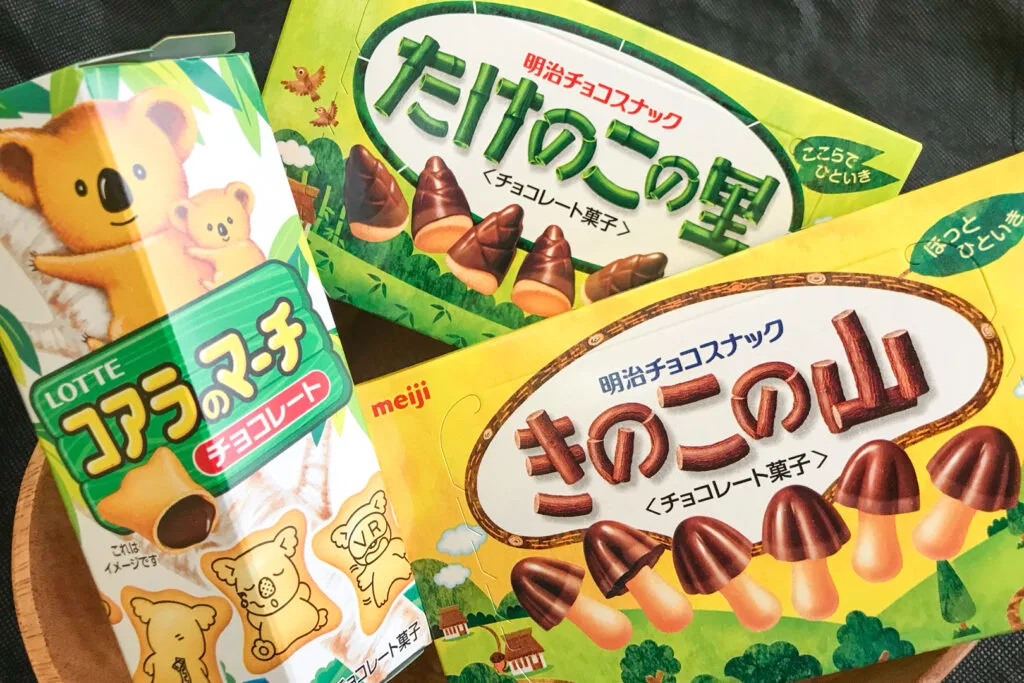
Black Thunder (ブラック・サンダー), a chocolate-covered biscuit-rice puff combo from Yuraku Confectionery (有楽製菓, ゆうらく・せいか, ユーラクせいか), and the bite-sized chocolate from Tirol Choco (チロル・チョコ) are the perfect pick-me-up when you’re craving something sweet but don’t want to commit to a full-sized chocolate bar. Tirol’s chocolates come in a variety of flavors, including Coffee Nougat (コーヒー・ヌガー) and Milk (ミルク), while you’ll find Black Thunder in matcha and hazelnut among other flavors.
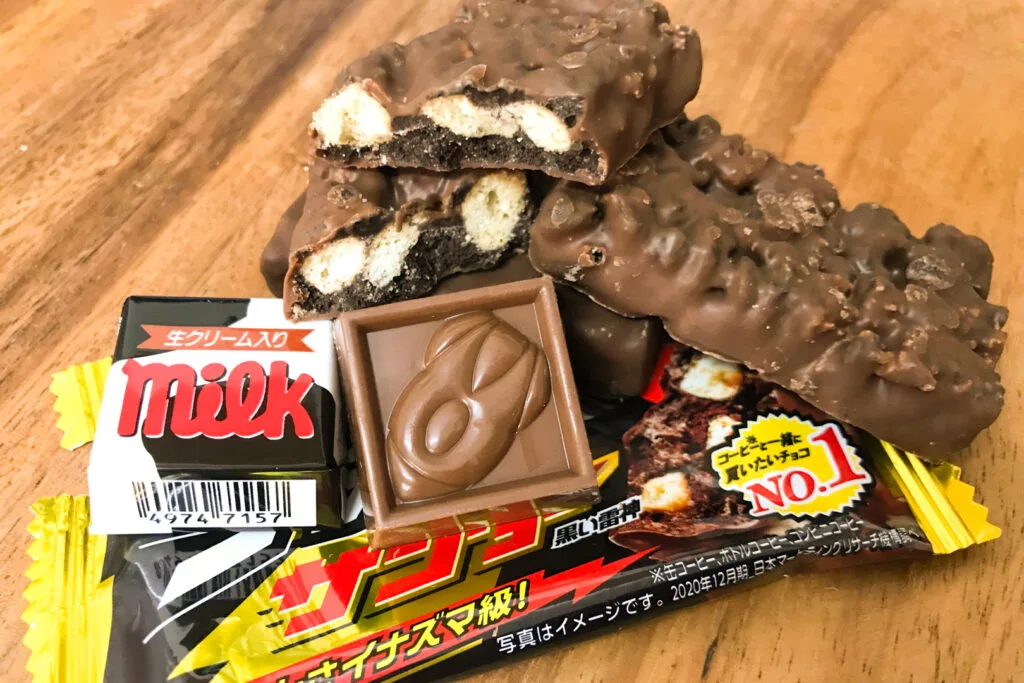
On the fancier side of things are Almond Chocolate (アーモンド・チョコレート), Macadamia Chocolate (マカダミア・チョコレート), and Meltykiss (メルティー・キッス), all three of which are made by Meiji. Meltykiss, a winter-only chocolate treat that melts like snow in your mouth, comes in a range of flavors that include First Flush Green Tea (初摘み濃抹茶, はつづみ・こいまっちゃ) and Rum & Raisin (くちどけラム&レーズン). Why wintertime only? This impossibly smooth Japanese snack is made with cocoa butter and must be stored at temperatures lower than 23 degrees Celsius, an important point to keep in mind should you choose it as a souvenir.
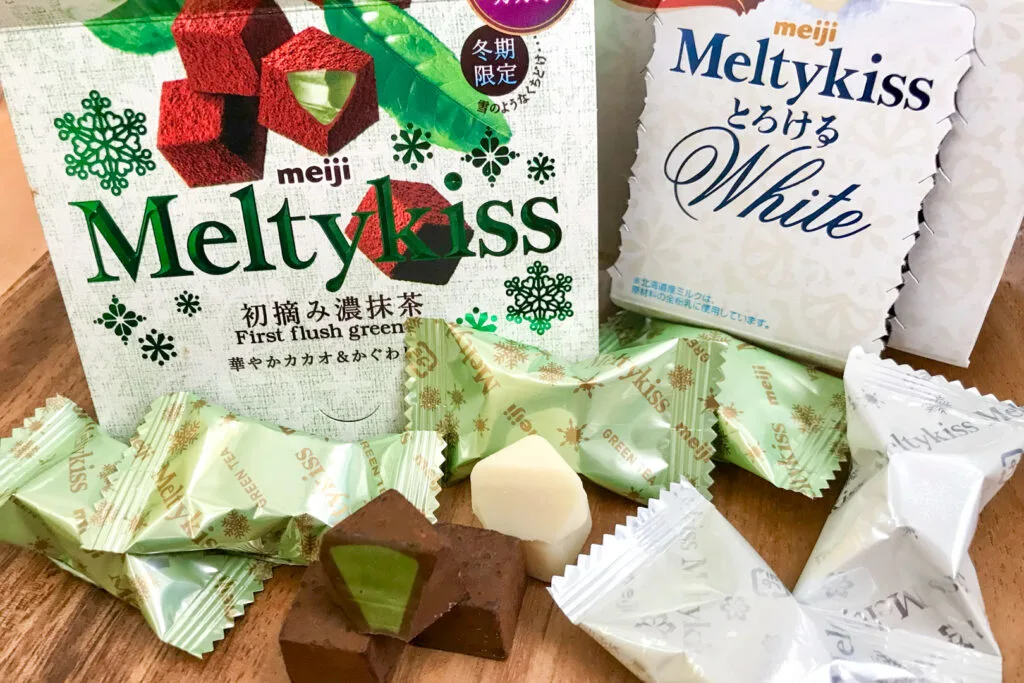
Karinto (かりん糖, かりんとう) wins the award for the least appetizing snack on this list—take a look and you’ll understand why. But what it lacks in looks it makes up for in taste. Traditional karinto are a deep-fried, flour-based snack sweetened with brown sugar boasting a rich, molasses-tinged caramel flavor. Nowadays, you’ll find karinto in other flavors, too, from sesame to chocolate and beyond. Keen to try this snack but can’t find it on a store shelf near you? Try making some at home.
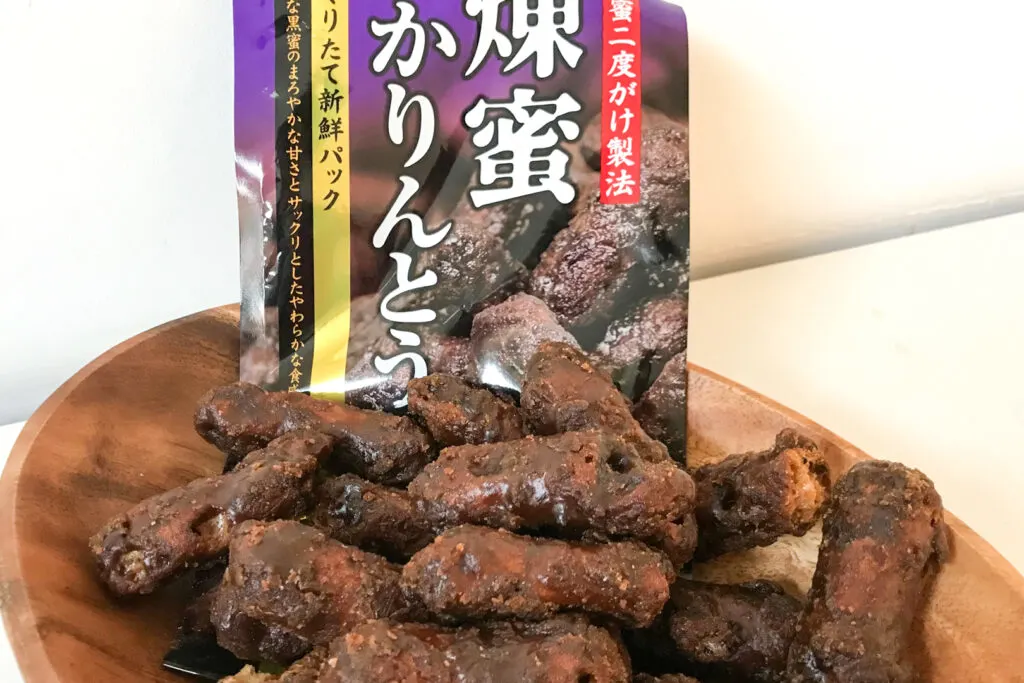
Salty Japanese Snacks
There are salty snacks a-plenty on store shelves, many of which will be familiar to those living outside of Japan. When it comes to chips, you’ll find the standard sea salt, but also a whole world of Japanese flavors: nori-shio (のり塩, のり・しお), a combination of nori and salt; consommé (コンソメ), which tastes a bit like a chip flavored with soup stock; wasabi (山葵, わさび, ワサビ), which, as expected, has the kick of Japanese horseradish; and ume (梅, うめ, ウメ), a slightly sour chip inspired by pickled plums. This is just a start—the variety of flavors is dizzying.
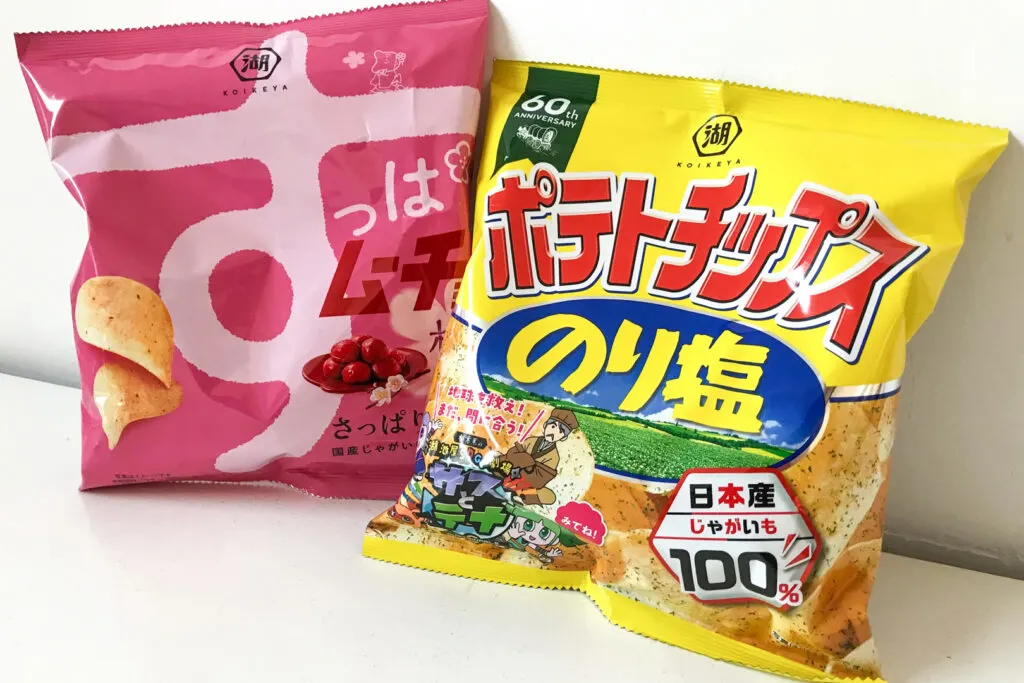
Kyabetsu Taro (キャベツ太郎, キャベツたろう), corn puffs flavored with nori flakes and sauce, may be aimed at kids, but plenty of grownups still snag a bag of this treat manufactured by Kado (菓道, かどう) here and there for the sake of nostalgia and the snack’s saucy kick.
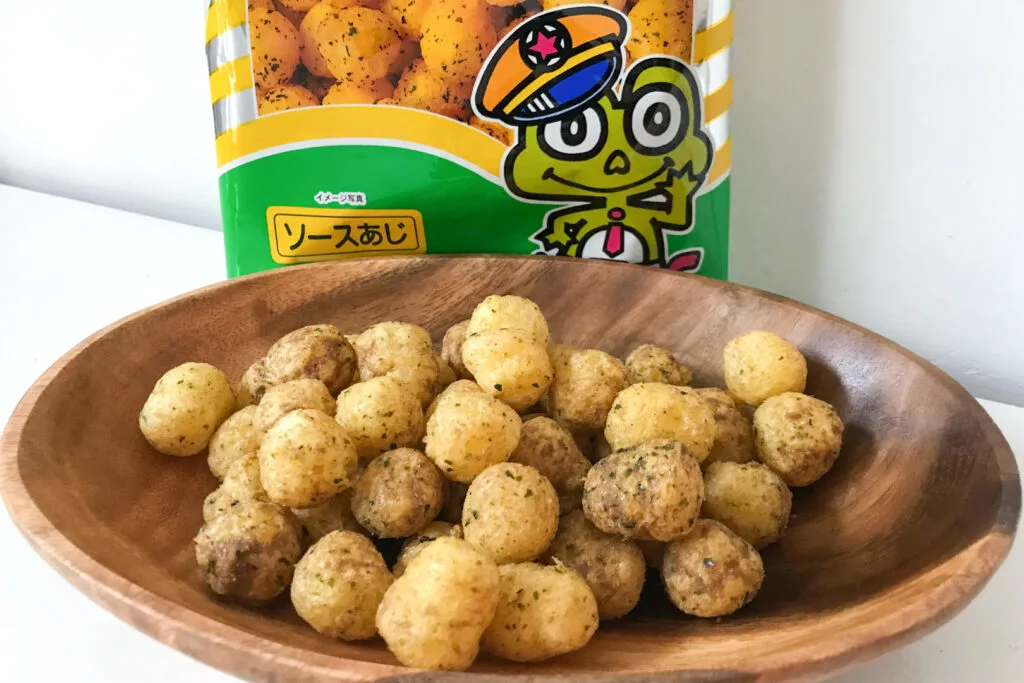
One of Japan’s most popular snacks, Jagarico (じゃがりこ) , from Calbee (カルビー), are crunchy sticks of potato-based dough that come in a variety of flavors. Salad (サラダ), Cheese (チーズ), and Butter Potato (じゃがバッター) are the standard flavors, and a host of other limited-edition flavors are available depending on season and location. There’s even a line aimed at adults, though these are harder to come by, with flavors like Wasabi Soy Sauce (わさび醤油, わさび・しょうゆ).
A little tip if you find yourself with a cup of Jagarico and an unexpected craving for potato salad: Pour approximately 100–120 mL of hot water over the contents of an entire cup of Jagarico, let it sit for several minutes, and then stir. Voilà! Not quite like how Grandma made it, but pretty good nonetheless!

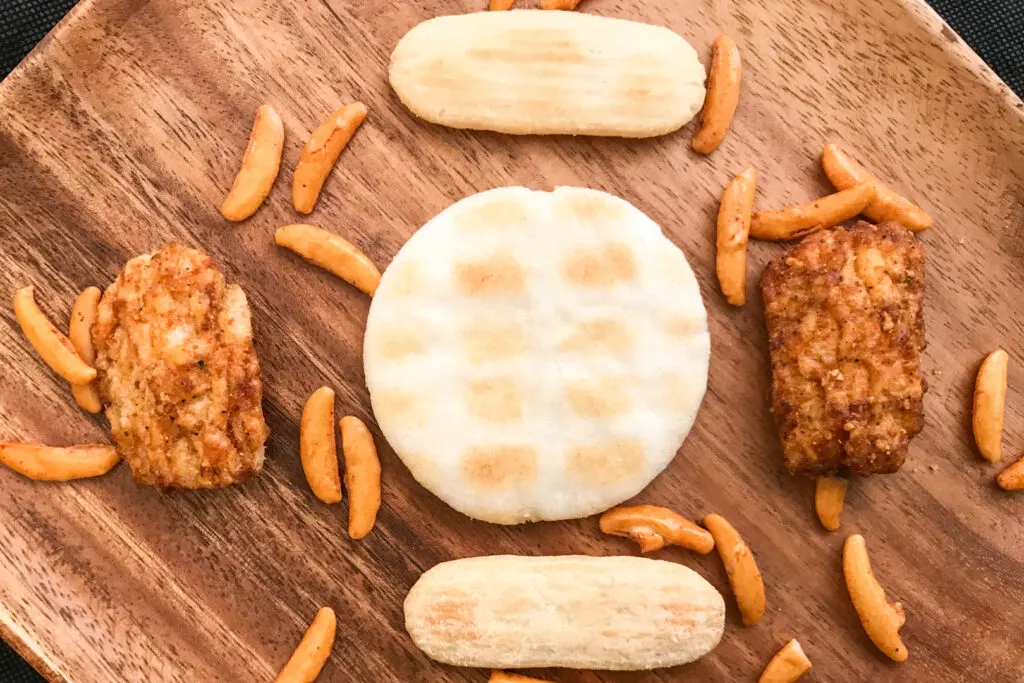
Rice Crackers: A Category of Japanese Snacks unto Itself
When it comes to traditional Japanese snacks, rice crackers, or beika (米菓, べいか), reign supreme. They come in a wide range of flavors and styles, and three basic categories: senbei (煎餅, せんべい), arare (あられ), and okaki (おかき). Generally speaking, the difference between the three comes down to ingredients and size. Whereas senbei are made from non-glutinous rice*, glutinous rice is used to make arare, which generally refers to small crackers, and okaki, which generally refers to large crackers. The use of glutinous rice results in a puffier, softer finished product.
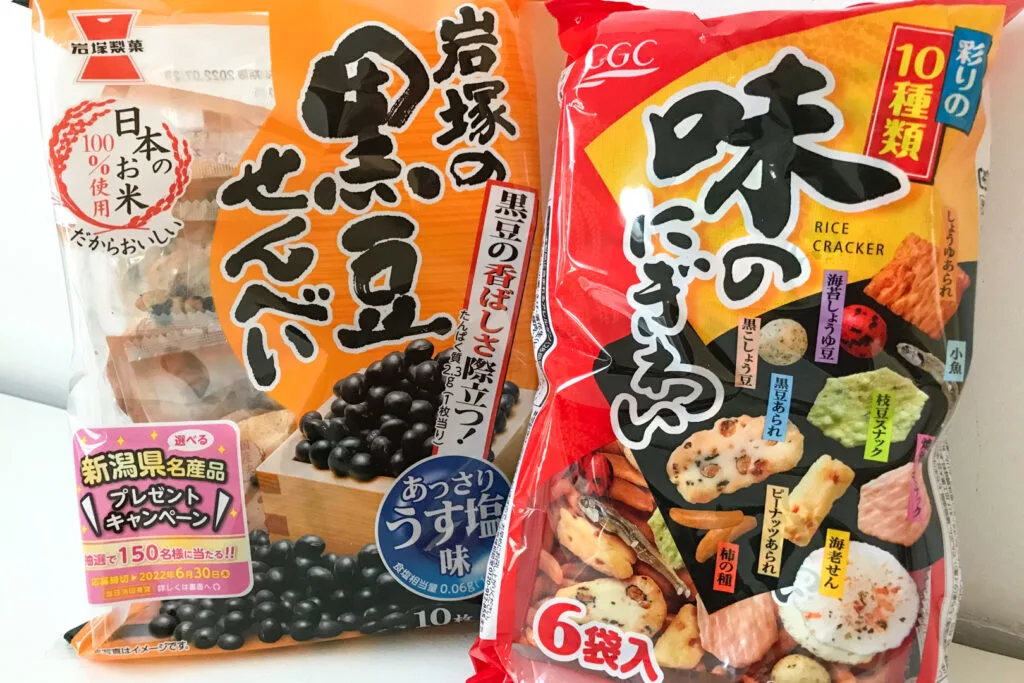
Senbei can be sweet, salty, savory, or spicy. They can be wrapped in nori or mixed with kuromame (黒豆,くろ・まめ) black beans or minced shrimp. Some have squid baked on top. Others are soft and chewy. Despite being considered senbei, kuro-goma (黒胡麻, くろ・ごま) black sesame senbei are made with wheat flour instead of rice.

Kaki no tane (柿の種, かき・の・たね) are a combination of slightly spicy senbei shaped like persimmon seeds and salted peanuts. Originally created by Naniwaya Seika (浪花屋製菓, なにわや・せいか), nowadays, a number of companies make the snack. The brand you’re most likely to come across on convenience store and supermarket shelves, however, is Kameda Seika (亀田製菓, かめだ・せいか).
In addition to the standard, you’ll also find kaki no tane packaged without peanuts and in a variety of flavors—there are even chocolate-covered kaki no tane!

A list of other popular varieties of rice crackers reads like a rundown of Kameda Seiko’s product lineup: Happy Turn (ハッピー・ターン), Soft Salad (ソフト・サラダ), Salad Usu-Yaki (サラダうす焼, サラダうす・やき), Tsumami Tane (つまみ種, つまみ・たね), which consists of a variety of mini-senbei in a single bag, and Kotsubukko (こつぶっこ), a kind of arare. Other brands you’ll find with similar offerings include CGC Japan (シジシー・ジャパン) and Iwatsuka Seika (岩塚製菓, いわつか・せいか).
*Senbei can sometimes refer to snacks that contain wheat flour or no flour at all. Hone-senbei (骨煎餅・ほね・せんべい), made from the fried bones (hone) of eel or small fish, is one of several non-flour-based senbei.
Beyond the basics
The Japanese snacks introduced above can be found across the country, but Japan’s fondness for regional versions of favorite treats means you might come across limited editions made with local specialties as you explore the country. For example, an Okinawan version of Black Thunder is made with Okinawan salt and kokuto (黒糖, こくとう) unrefined brown sugar. These special snacks are a great way to get to know what different regions produce and add an extra bit of excitement to snack runs. So, keep your eyes peeled, and you may well end up with a rare regional take on your favorite Japanese snack.
What are your favorite Japanese snacks? Which one(s) would you most like to try?
Pin me for later
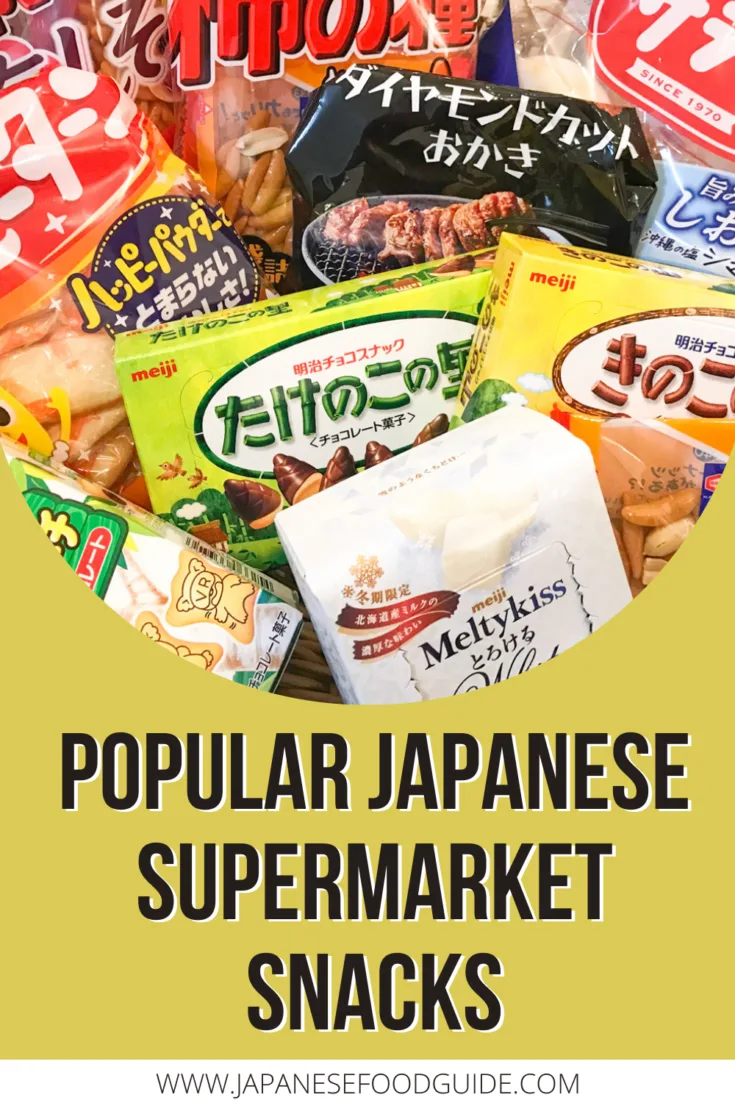
Helen A. Langford-Matsui is a Canadian writer based in Kamakura, Japan. In addition to writing, she also runs a small inn with her husband and two children. Through both lines of work, she gets to do what she loves best—share her love of Japan with people from around the world.

Rebecca Otowa
Saturday 14th of May 2022
My favorite Japanese snack is ピーナッツあげ、which I became addicted to when I was living in Sugamo Tokyo, in 1976. It's still one of my favorites and I'm glad it hasn't disappeared like so many snacks do. One favorite that I am finding it increasingly difficult to find is Don Tacos, A nicely spicy corn chip that I found about eight years ago and is now being phased out apparently.
Alice Gordenker
Friday 15th of April 2022
I'm a big fan of "agemochi" salty snacks, which are most commonly available in "shio-aji" (salt flavor) and "shoyu-aji" (soy-sauce flavor). I have also seen "shichimi" flavored agemochi, which have been sprinkled with the classic "shichimi" dry seasoning mix. I always choose "shio-aji" because I prefer its simple, straightforward taste. Making agemochi is a lot of work -- first you cook sticky rice, then you pound it in to a paste, shape it into blocks, and let it dry. Then the blocks are cubed and deep fried. As a result of all this labor, agemochi is usually pricier than mass-produced snacks but well worth it, in my opinion. Most are handmade by small shops and don't have artificial flavoring or additives.